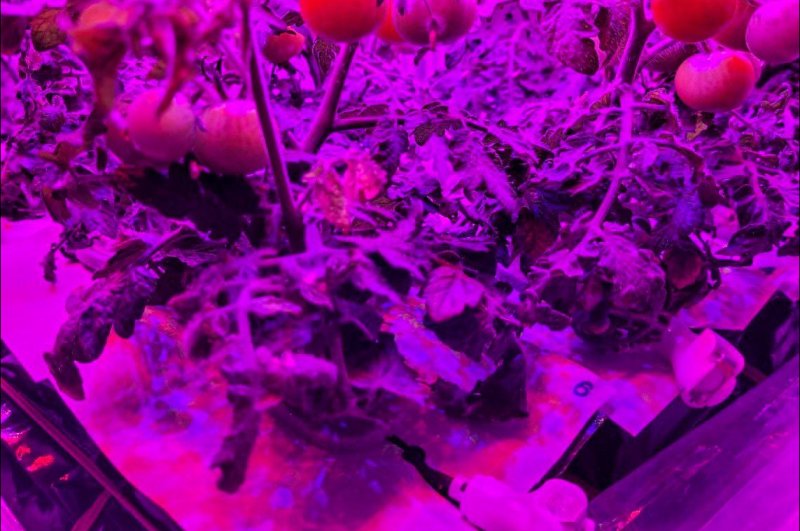1 of 4 | A preflight image shows Red Robbin dwarf tomatoes in veggie hardware at the Kennedy Space Center. Photo courtesy of NASA
Nov. 22 (UPI) -- The launch of a SpaceX Dragon spacecraft to resupply the International Space Station was scrubbed Tuesday afternoon because of bad weather, NASA officials said.
The CRS-26 mission had been set to launch on a new Falcon 9 rocket at 3:54 p.m. EST from Kennedy Space Center in Florida. The attempt was reset to Saturday at 2:20 p.m.
NASA engineers called a halt to the countdown at T-minus 57 seconds, though they anticipated a postponement long before they officially scrubbed the flight.
They said they feared lighting in the area could hit and potentially destroy the rocket and new Cargo dragon capsule after liftoff.
The Dragon's goal was to deliver equipment and experiments intended to prolong the survivability of astronauts in space, including growing dwarf tomatoes "as part of efforts to create a continuous fresh-food production system in space, and an experiment that tests an on-demand method to create specific quantities of key nutrients."
The tomatoes will be grown in an on-station Vegetable Production System known as "Veggie."
Several pieces of equipment designed to help better assess the health of astronauts also will be onboard the Dragon.
"One of the payloads aboard the cargo flight is the Moon Microscope kit for in-flight medical diagnosis that includes a portable handheld microscope and a small blood sample staining device," NASA said in a press release.
The kit will allow astronauts to collect and view blood samples and transmit the images back to Earth so that flight surgeons can diagnose illnesses.
A new piece of technology called Falcon Goggles will be transported to the space station to provide high-speed video of astronauts' eyes to help better understand the effects of space travel.
"Devices like this will be invaluable as we work toward preparing astronauts for long-duration exploration to the moon and beyond to Mars," said Cherie Oubre, deputy flight scientist with NASA's Human Research Initiative.
Additionally, the Dragon will deliver an experimental "Extrusion" tool designed create shapes out of resin in microgravity.
"Our method reduces the time to create key parts needed for daily mission use and it may support future space construction of large structures like trusses and antennae," said Ariel Ekblaw, principal investigator and director of the Massachusetts Institute of Technology Media Lab Space Exploration Initiative.
The mission is also set to deliver a new set of International Space Station roll-out solar arrays, which could increase the space station's available power by up to 30%.















